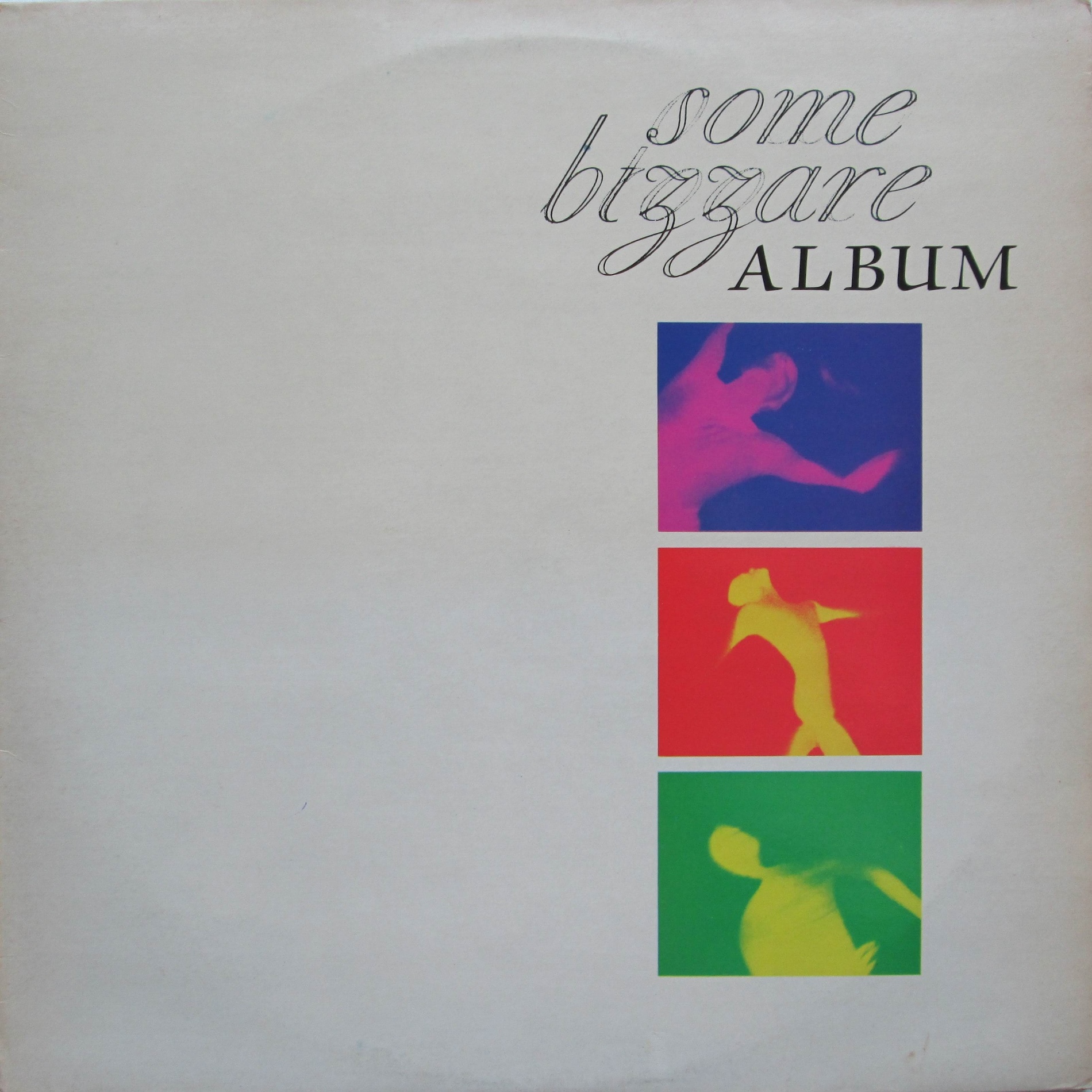The Rise of Some Bizzare Records
The 1980s was a decade of bold experimentation and artistic expression in the music world, and at the center of this revolution was an influential independent record label called Some Bizzare Records. Founded by the visionary music promoter and manager Stevo Pearce, Some Bizzare played a pivotal role in bringing together groundbreaking and eclectic artists who defied conventional genre boundaries. Known for its unorthodox approach to signing talent and its commitment to artistic freedom, Some Bizzare helped launch the careers of several iconic artists who went on to shape the alternative, electronic, and industrial music scenes.
This article explores the history, legacy, and cultural impact of Some Bizzare Records, diving into the label’s roster, Pearce’s unconventional methods, and its influence on 80s music culture.
The Origins of Some Bizzare Records: Stevo Pearce’s Vision
Some Bizzare Records was founded in 1981 by Stevo Pearce, a man whose deep love for experimental music and counterculture movements drove him to start a label unlike any other. Pearce’s vision was to create a platform where unique and genre-defying artists could flourish without being constrained by commercial pressures or mainstream expectations.
Pearce had a talent for spotting avant-garde musicians who, though largely unknown, were destined for greatness. He eschewed traditional A&R methods, instead relying on instinct and a passion for the unconventional. His bold approach soon paid off when he discovered and nurtured acts that would later become synonymous with the 80s alternative music movement.

Early Breakthrough: The 1981 Some Bizzare Album Compilation
In 1981, Some Bizzare’s first major breakthrough came with the release of the Some Bizzare Album, a compilation that introduced a range of relatively unknown acts. This record was a crucial starting point for several bands that would go on to become iconic in their own right. The compilation featured early tracks by Depeche Mode, Soft Cell, The The, and Blancmange, among others.
The Some Bizzare Album provided a platform for these artists at a time when electronic and synth-pop music was still in its infancy. Stevo Pearce’s ability to curate such an eclectic mix of future stars on a single album demonstrated his knack for identifying raw, cutting-edge talent. For instance:
- Depeche Mode went on to become one of the most successful electronic bands of all time, later moving to Mute Records.
- Soft Cell achieved major success with their hit “Tainted Love,” a song that became an anthem of the 80s.
- Blancmange emerged as one of the leading synth-pop duos of the era.
This compilation firmly established Some Bizzare Records as a label to watch and gave Pearce a foothold in the music industry.
Soft Cell: Some Bizzare’s First Major Success
Perhaps the biggest success story to emerge from Some Bizzare Records was Soft Cell. The duo, comprised of Marc Almond and David Ball, was among the first artists signed to the label. Their dark, emotive synth-pop sound stood in stark contrast to the lighter, more commercial styles of the time. It was their cover of Gloria Jones’ “Tainted Love” that skyrocketed them to fame, a track that has since become one of the most iconic songs of the 80s.
Released in 1981, “Tainted Love” became a massive hit, reaching No. 1 on the UK Singles Chart and No. 8 on the Billboard Hot 100 in the United States. It remained on the charts for 43 weeks, making it one of the longest-running charting singles of the time. This success helped propel Some Bizzare into the spotlight and positioned Stevo Pearce as a savvy label head who could guide underground artists to mainstream success without compromising their artistic integrity.

The The and Matt Johnson’s Artistic Vision
Another notable artist signed to Some Bizzare Records was The The, the brainchild of multi-instrumentalist and singer Matt Johnson. Johnson’s work with The The is renowned for its socio-political commentary and emotionally charged lyrics. The band’s debut album, Soul Mining (1983), was released under Some Bizzare Records in collaboration with Epic Records, and it remains a critical favorite to this day.
Pearce’s collaboration with Johnson highlighted his commitment to fostering genuine artistic expression. The The’s music, a blend of post-punk, electronic, and avant-pop elements, challenged conventional pop music structures, reflecting Pearce’s willingness to push boundaries and promote artists who existed outside of the commercial mainstream.
Cabaret Voltaire and the Rise of Industrial Music
Some Bizzare Records also played a critical role in the development of industrial music, particularly through their work with Cabaret Voltaire. Known for their experimental soundscapes, abrasive rhythms, and politically charged lyrics, Cabaret Voltaire was one of the pioneering bands in the industrial music scene. Their association with Some Bizzare further cemented the label’s reputation as a haven for unconventional artists pushing sonic and thematic boundaries.
Cabaret Voltaire’s partnership with Pearce resulted in releases that were groundbreaking for the time, such as Red Mecca (1981) and The Crackdown (1983). Their work laid the foundation for a new wave of industrial and electronic music acts, many of which would take inspiration from the fusion of political activism and electronic experimentation found in their records.
Coil and Experimentalism in the 80s
Another standout act associated with Some Bizzare Records was Coil, the experimental band formed by John Balance and Peter Christopherson. Their music, a mixture of dark ambient, industrial, and avant-garde elements, represented the label’s bold commitment to artistic experimentation and transgressive themes. Coil’s early releases, including Scatology (1984), pushed boundaries both sonically and thematically, dealing with occultism, sexuality, and taboo topics.

Coil’s association with Some Bizzare Records reinforced the label’s role as a haven for artists who dared to explore the fringes of music and culture. This experimental ethos, coupled with Pearce’s hands-off management style, gave artists the freedom to fully realize their unique visions. However, Coil later a falling out with Some Bizzare Records. While their early work was associated with the label, their relationship with Stevo Pearce became strained, leading to a breakdown in the collaboration.
Coil—the avant-garde, experimental band formed by John Balance and Peter Christopherson—initially released their debut album, Scatology (1984), under Some Bizzare Records. This was a significant milestone for the band, as it helped them gain exposure within the alternative music scene. However, the friction between Coil and Stevo Pearce began to emerge during this period, largely due to Pearce’s unconventional and often contentious management style.
The Reasons for the Fallout
- Creative Control and Direction: Coil, known for their fiercely independent and artistic approach to music, valued full creative control over their work. Stevo Pearce was also a strong proponent of artistic freedom, but disagreements arose over how the band’s music should be promoted and released. Pearce was known for taking an eccentric and sometimes hands-off approach, which created frustration for some artists, including Coil.
- Financial Disputes: A recurring issue with Some Bizzare Records involved disputes over royalties and financial transparency. Coil, like other artists on the label, felt that they were not receiving the compensation they deserved for their work. Pearce’s informal business practices, which often eschewed traditional contracts, further exacerbated tensions between the band and the label. There were claims from the band that they were underpaid for their contributions and that Stevo’s erratic behavior hindered their commercial success.
- Communication Breakdown: Coil’s relationship with Pearce was also marked by poor communication. Pearce, known for his reclusive nature and tendency to be secretive, often left artists in the dark regarding the business aspects of their careers. This lack of transparency led to growing dissatisfaction on the part of Coil, who ultimately decided that their creative vision could not thrive under the label’s management.
Coil’s Departure from Some Bizzare
After the release of Scatology, the band’s frustration reached a tipping point, and they chose to leave Some Bizzare Records. They distanced themselves from Stevo Pearce and opted to release their future works on other labels, including their own Threshold House label. This move allowed Coil to take full control of their music, production, and distribution, which was in line with their ethos of remaining uncompromisingly independent and experimental.
Though their time with Some Bizzare Records was brief, it marked an important chapter in Coil’s early career. The fallout with Pearce highlighted the challenges that many avant-garde artists faced when working within the confines of a label, even one as unconventional as Some Bizzare.
Unconventional Business Practices: Stevo Pearce’s Infamous Management Style
Stevo Pearce’s reputation as a manager and label head is almost as famous as the artists he represented. His business practices were often unconventional, if not outright eccentric. Known for being reclusive and distrustful of the mainstream music industry, Pearce’s relationship with major labels was often fraught with tension.
He famously shunned traditional contracts, sometimes operating on informal agreements, which created disputes with some artists. However, his focus was always on ensuring that the artists retained creative control over their work. This non-conformist approach won him both admirers and critics, with many praising his commitment to artistic freedom while others found his methods difficult to work with.
Pearce’s unorthodox management style, however, did not prevent him from achieving substantial success. His ability to navigate the volatile music industry while promoting fringe artists speaks to his unique vision and resilience.
Some Bizzare Records’ Impact on the Alternative Music Scene
By the mid-1980s, Some Bizzare Records had become synonymous with the alternative music scene. Pearce’s roster of artists, many of whom went on to achieve international fame, challenged the conventions of pop music and paved the way for future generations of alternative, industrial, and electronic musicians.
Some Bizzare was also instrumental in shaping the aesthetics of the 80s. The visual presentation of the label’s artists—dark, edgy, and often androgynous—challenged mainstream notions of gender and identity. This aspect of the label’s legacy can be seen in its influence on goth and industrial subcultures, which emerged as major cultural forces in the late 80s and early 90s.

Decline and Legacy: Some Bizzare in the 1990s and Beyond
While Some Bizzare Records saw incredible success in the 1980s, the 1990s marked a period of decline for the label. As the music industry shifted toward more commercial and polished sounds, Some Bizzare’s influence began to wane. Pearce’s reluctance to adapt to the changing landscape and his continued focus on underground acts meant that the label struggled to maintain the same level of prominence it had in the previous decade.
However, the legacy of Some Bizzare remains strong. Its role in shaping the alternative and industrial music scenes cannot be understated. Many of the artists that first gained attention through the label have gone on to achieve legendary status in their respective genres. Furthermore, Some Bizzare’s commitment to artistic freedom and boundary-pushing music set a standard for independent labels that followed.
The Enduring Influence of Some Bizzare Records
Some Bizzare Records holds a unique place in music history. Founded by the enigmatic and visionary Stevo Pearce, the label defied conventional music industry norms and became a breeding ground for some of the most innovative and influential artists of the 1980s. Through its roster of eclectic and groundbreaking acts, Some Bizzare helped shape the sound and aesthetics of alternative, electronic, and industrial music.
Some Bizzare Records was known for being home to a variety of influential bands, particularly in the realms of synth-pop, industrial, and alternative music during the 1980s. Below is a list of major bands associated with Some Bizzare and their notable releases on the label.
1. Soft Cell
- Members: Marc Almond, David Ball
- Genre: Synth-pop
- Main Releases on Some Bizzare:
- Non-Stop Erotic Cabaret (1981) – Featuring the massive hit “Tainted Love.”
- The Art of Falling Apart (1983) – A darker follow-up album with the singles “Where the Heart Is” and “Loving You, Hating Me.”
- Non Stop Ecstatic Dancing (1982) – A remix album that included reworked versions of tracks from their debut album.
2. The The
- Members: Matt Johnson (core member), and collaborators
- Genre: Post-punk, alternative
- Main Releases on Some Bizzare:
- Burning Blue Soul (1981) – Initially credited to Matt Johnson as a solo album, but later reissued as The The.
- Soul Mining (1983) – A critically acclaimed debut album featuring singles like “This Is the Day” and “Uncertain Smile.”
3. Depeche Mode
- Members: Dave Gahan, Martin Gore, Andy Fletcher, Vince Clarke (early member)
- Genre: Synth-pop, electronic
- Main Release on Some Bizzare:
- Some Bizzare Album (1981) – Depeche Mode’s track “Photographic” appeared on this compilation, which helped launch their career before they moved to Mute Records.
4. Blancmange
- Members: Neil Arthur, Stephen Luscombe
- Genre: Synth-pop, new wave
- Main Releases on Some Bizzare:
- Some Bizzare Album (1981) – Featured their early track “Sad Day.”
- Happy Families (1982) – Though released under London Records, their early success was linked to Some Bizzare’s support.
5. Cabaret Voltaire
- Members: Richard H. Kirk, Stephen Mallinder, Chris Watson (early member)
- Genre: Industrial, electronic, experimental
- Main Releases on Some Bizzare:
- Red Mecca (1981) – Released around the time of their association with Some Bizzare, this album helped define their industrial sound.
- The Crackdown (1983) – A pivotal album marking a shift toward a more polished, electro-funk sound, co-released with Some Bizzare.
6. Coil
- Members: John Balance, Peter Christopherson
- Genre: Industrial, dark ambient, experimental
- Main Release on Some Bizzare:
- Scatology (1984) – Their debut album, known for its dark, esoteric themes, was released through Some Bizzare before their fallout with the label.
7. Psychic TV
- Members: Genesis P-Orridge, Alex Fergusson (early member)
- Genre: Industrial, experimental, psychedelic
- Main Releases on Some Bizzare:
- Force the Hand of Chance (1982) – The debut album blending industrial sounds with psychedelic and experimental elements, released via Some Bizzare.

8. Marc and the Mambas
- Members: Marc Almond (Soft Cell), The Venomettes, othersGenre: Dark cabaret, experimentalMain Releases on Some Bizzare:
- Untitled (1982) – The first album from Marc Almond’s experimental project outside Soft Cell, exploring darker, more theatrical sounds.Torment and Toreros (1983) – The second album, further pushing Almond’s emotional and avant-garde music.
9. Foetus
- Member: J. G. Thirlwell
- Genre: Industrial, noise, experimental
- Main Releases on Some Bizzare:
- Hole (1984) – A ferocious blend of industrial and noise rock that helped define Foetus’ early sound.
- Nail (1985) – A highly influential album blending industrial, post-punk, and experimental noise under the “Foetus” moniker.
10. Test Dept
- Members: Various (collective group)
- Genre: Industrial, experimental
- Main Releases on Some Bizzare:
- Some Bizzare Compilation appearances and early singles, although much of their work was released independently, they were associated with the label during the mid-80s.
11. Einstürzende Neubauten
- Members: Blixa Bargeld, N.U. Unruh, and others
- Genre: Industrial, noise
- Main Release on Some Bizzare:
- Some Bizzare Compilation – Their track “Tanz Debil” appeared on the compilation, marking one of their earliest UK releases.

12. The Swans
- Members: Michael Gira, Jarboe, others
- Genre: Noise rock, post-punk
- Main Releases on Some Bizzare:
- Some early releases were associated with Some Bizzare, particularly via compilations, but they gained wider fame with other labels.
Other Artists Featured on Some Bizzare:
- B-Movie: Known for their track “Moles,” which appeared on the Some Bizzare Album (1981).
- Neu Electrikk: Early electronic act featured on Some Bizzare Album.
See Discogs for a complete Discography
Though the label’s prominence may have faded over time, its influence continues to resonate in the music world today. Artists like Depeche Mode, Soft Cell, and Coil, who began their careers under the Some Bizzare banner, remain iconic figures in music. Moreover, the label’s commitment to artistic integrity and experimentalism serves as a reminder of the power of independent music and the importance of supporting artists who dare to challenge the status quo.
Some Bizzare Records may no longer dominate the charts, but its legacy as a trailblazer for alternative music is indelible.

